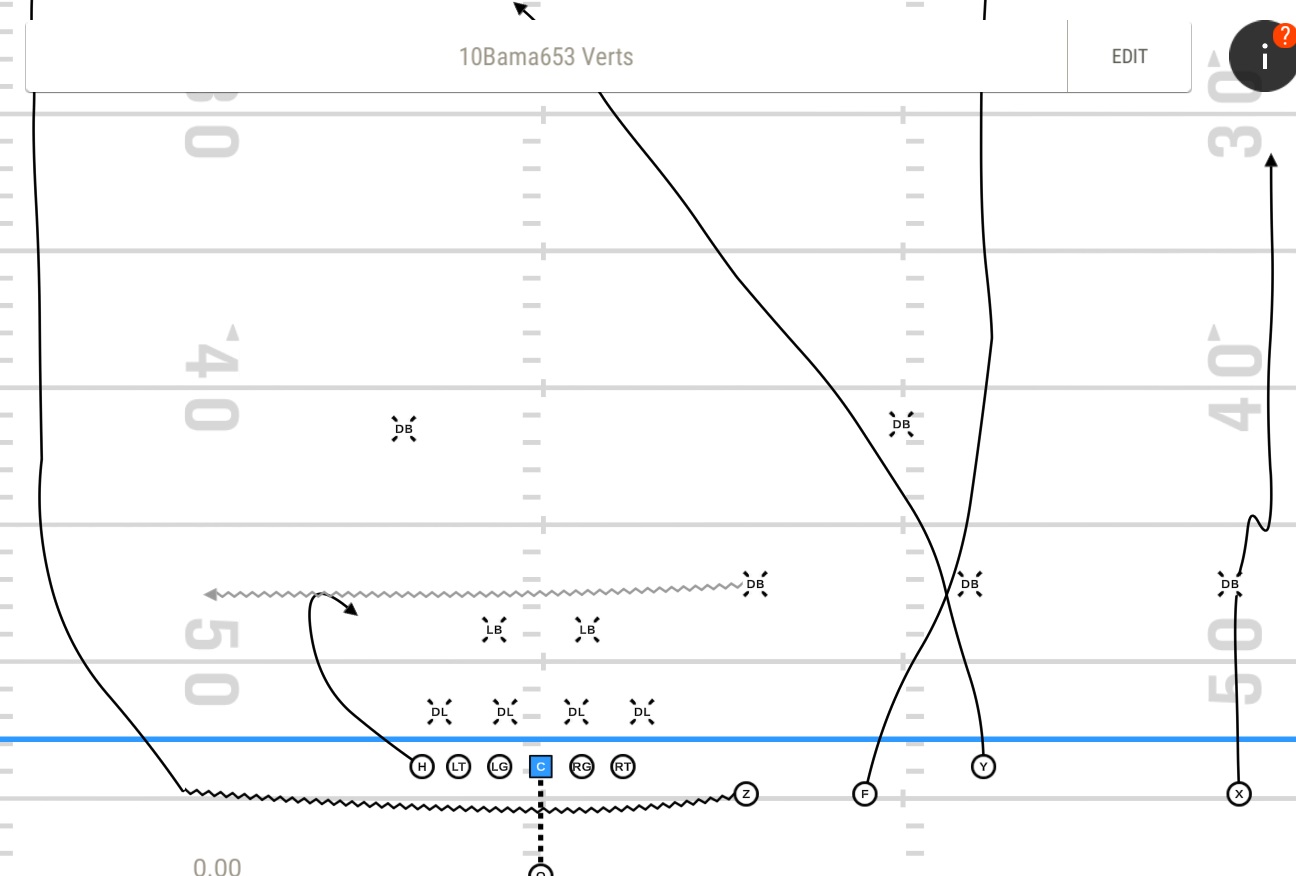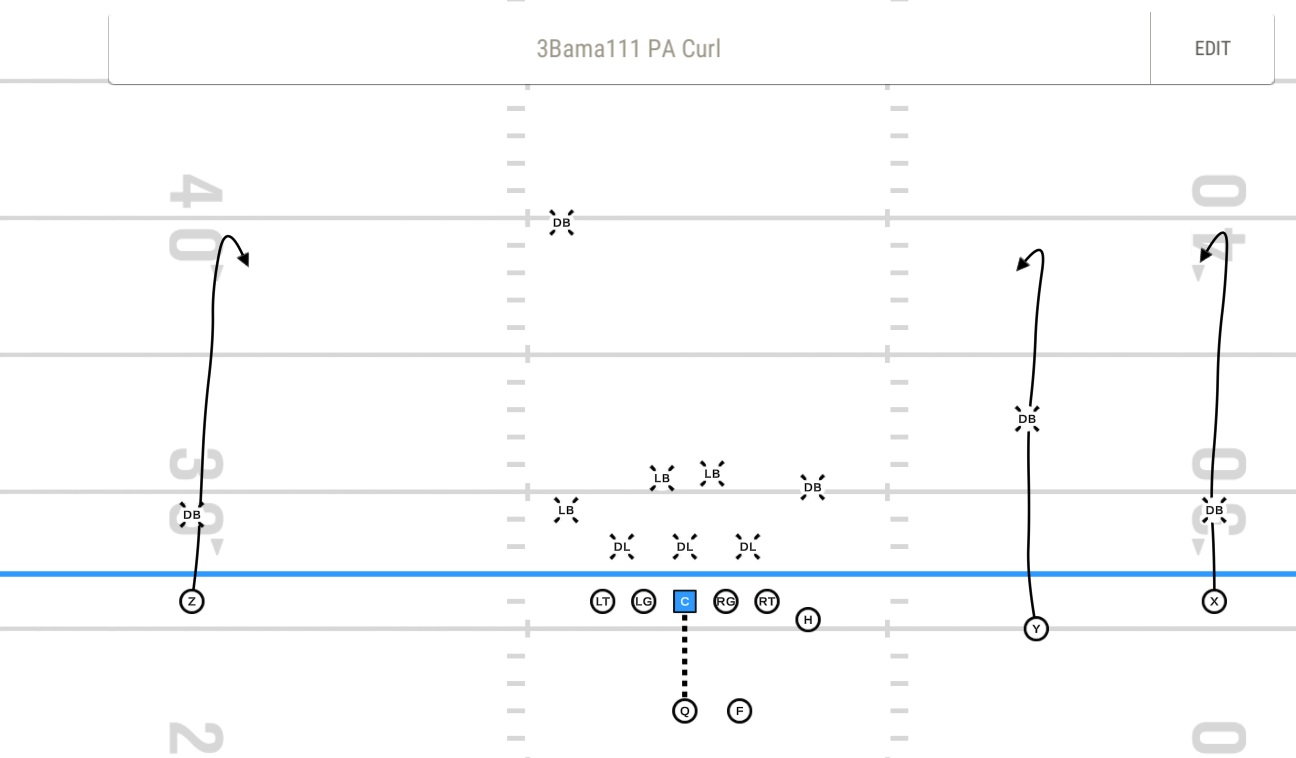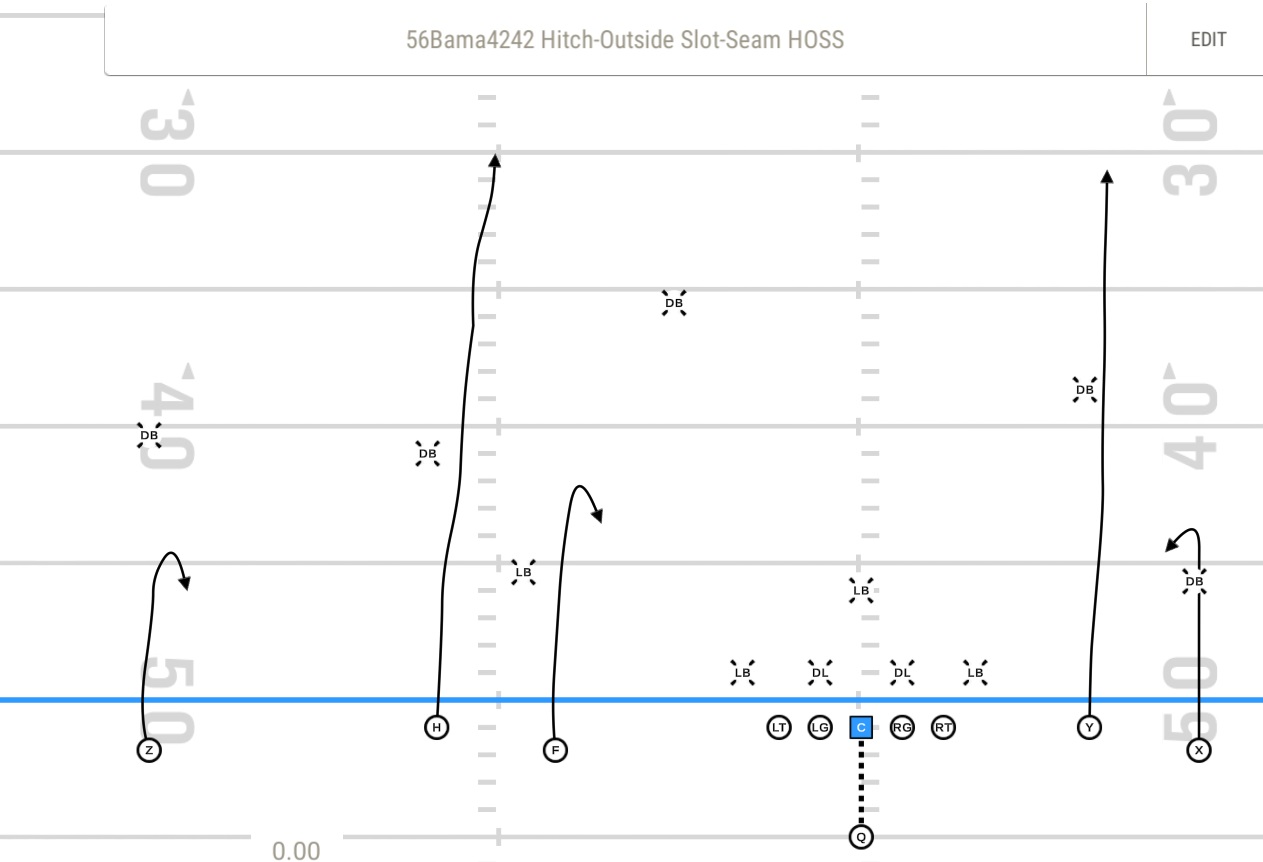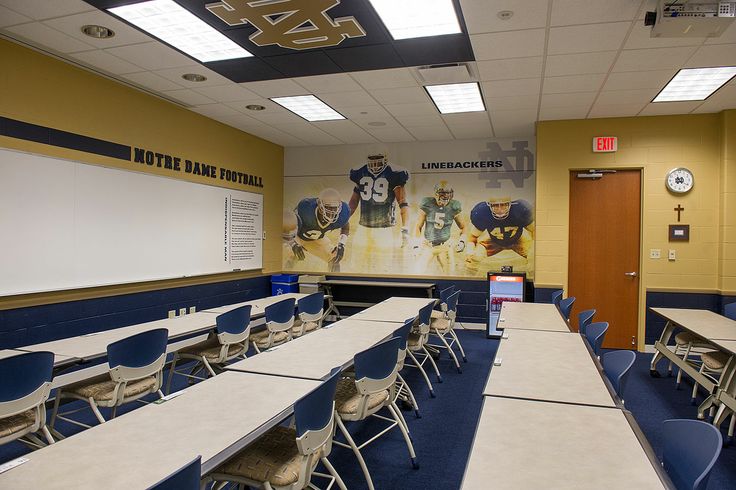In this fourth part analysis of Mike Denbrock’s offense, I will describe the vertical stem plays: (4) Verticals, All Curl/Spacing and HOSS (Hitch-Outside Slot-Seam).
In part 1, I described an overview of Denbrock’s offense. In part 2, I discussed the Yards-After-Catch (YAC) generating plays of Shallow, Drive and Dagger. In part 3, I analyzed the flood plays of Sail and Cross, and also the deep shot play of Yankee.
Verticals

Four Verticals, also known as 6 to the late Mike Leach (because that is how many points it was supposed to score), is a play with four receivers spaced horizontally releasing vertically to stress the defensive hook and deep zones. This play may seem like a hail-mary-esque play of last resort by sending everyone deep, but the spacing and built-in option routes often allow the quarterback to throw rather quickly.
All of the plays in this article could theoretically be the same play call but have had the receivers make different decisions. If the defensive back covering the receiver plays the deep area too much, the receiver can convert his route into a stop or curl or break to the sideline for a back shoulder throw . If it is zone, oftentimes the inside receivers are given the leeway to bend their routes slightly to better stress the defense.
In this deep shot by Jayden Daniels, LSU has the two slot receivers “Switch” their responsibilities while the Z receiver motions across the formation to gain leverage and attempt to confuse the defense. I would have liked better if the Tiger quarterback had thrown to the in breaking route after the design of the play forced two Crimson Tide defenders to run into each other.
Verts resources (1), (2), (3).
Curls/Spacing

All Curl and Spacing are very simple and easy to execute pass concepts. With All-Curl, everyone runs up to a 10 yard curl route before awaiting a pass. Spacing is the same idea, just with a shorter depth, generally of 5 yards. The horizontal spacing of the spread formation forces the defense to respect the entire width of the field. The vertical release forces the defense to respect the threat of a vertical route.
In this 1st and 10 play action called by Coach Denbrock, the running back and tight end pass protect while 3 receivers release 10 yards. Daniels chooses his preferred match-up and throws to the slot receiver for a nice first down. If I could give a criticism, if Daniels had thrown his receiver open and earlier before the break, the receiver would have had a much easier time versus the tight man coverage for the catch.
The Tigers dialed up an empty formation and Alabama responded by giving soft coverage. LSU runs a spacing concept to the field and completes a very easy pass to #11 of the Tigers with a little bit of Yards After Carry (YAC) to boot.
Curl & Spacing Resources (1), (2).
HOSS

HOSS (Hitch-Outside Slot-Seam) is one of the most well known concepts that Tom Brady utilized in New England and Tampa Bay. HOSS is run out of empty formations with both sides having mirrored hitch/seam concepts. The remaining receiver has some variation of a juke or option route.
Against two high safety coverages the inside receiver is often isolated against a linebacker. The hitches will convert into vertical routes versus press coverage and be 5-6 yard hitches versus off coverage.The seam routes will bend toward the goal posts if the coverage is a middle of the field open (generally cover 2 man/zone and cover 4). This play allows the quarterback to pick a preferred match-up and the receiver will have built in advantages toward success.
At this 1st and 10, HOSS is selected by the LSU offense. The Crimson Tide defense gives a lot of space to the #3 receiver to the field. Unfortunately, the Tigers aren’t able to generate much YAC as Bama defender sold out to close out. I wonder if the Tigers could have ran a stick-n-go from the #3 receiver at some point in this game, however the game was already out of hand.





Personally, I’m not a fan of all-hitches or spacing; with no vertical route to stress the secondary, a defense can definitely jump those hitches, and you’re SOL into scramble rules. It really forces good/quick decisions by the QB, but even having 1 vertical somewhere gives you that quick alert to throw a jump ball should the safeties bite hard on everyone else
That is what I found interesting about the spacing play lsu ran vs Alabama, the outside boundary receiver ran a go.
Some of this concern can be alleviated by allowing a conversion to a go route, not sure how common that is.
Good call, maybe a WR read to a double move is they sense the CB jumps the hitch.
I could imagine that takes a lot of trust and practice; it’s pick 6 is the QB throws the hitch and the WR cuts up on the go route
I love the first down catch, where a CB not involved makes the incomplete sign. Rule #1 of the DB code!
McPherson entered the portal. Did not see that coming.
yea, what’s up with that? And who do we have as a replacement or do we need to go to the portal for a punter now?
Eric Goins the graduate transfer walk-on from The Citadel, who graduated in 2015 then did 7 years in the Army or Chris Salerno, also a walk-on
Riley Leonard to handle all (pooch) punts